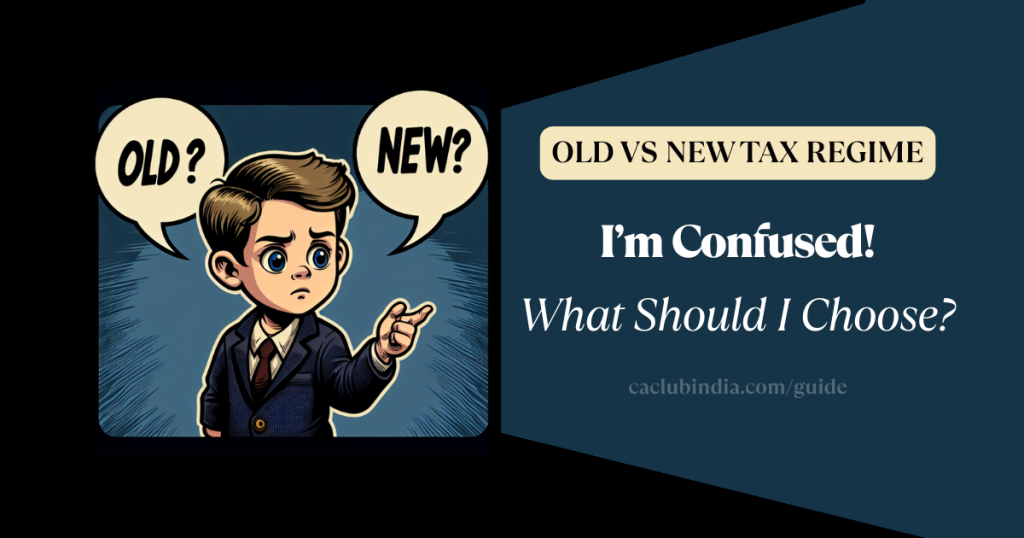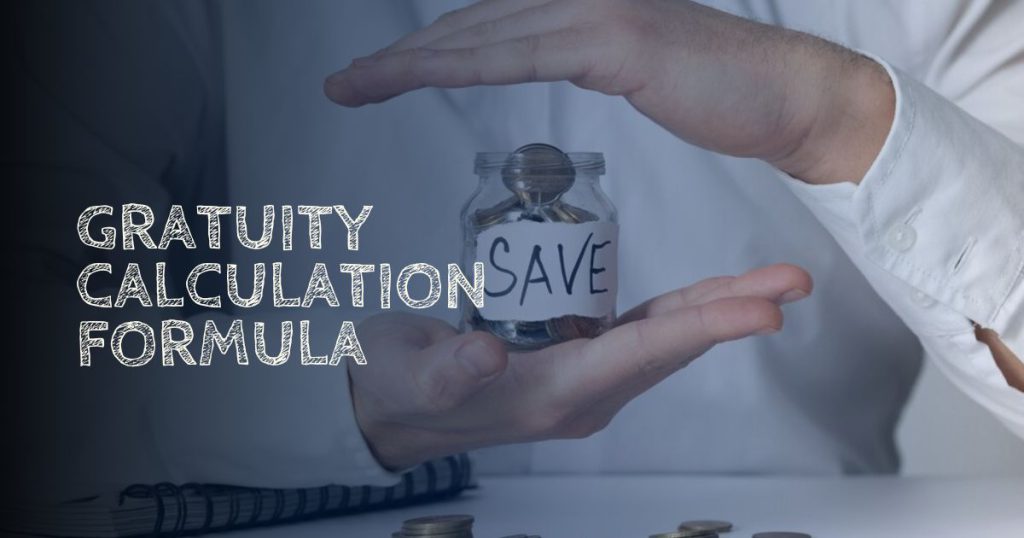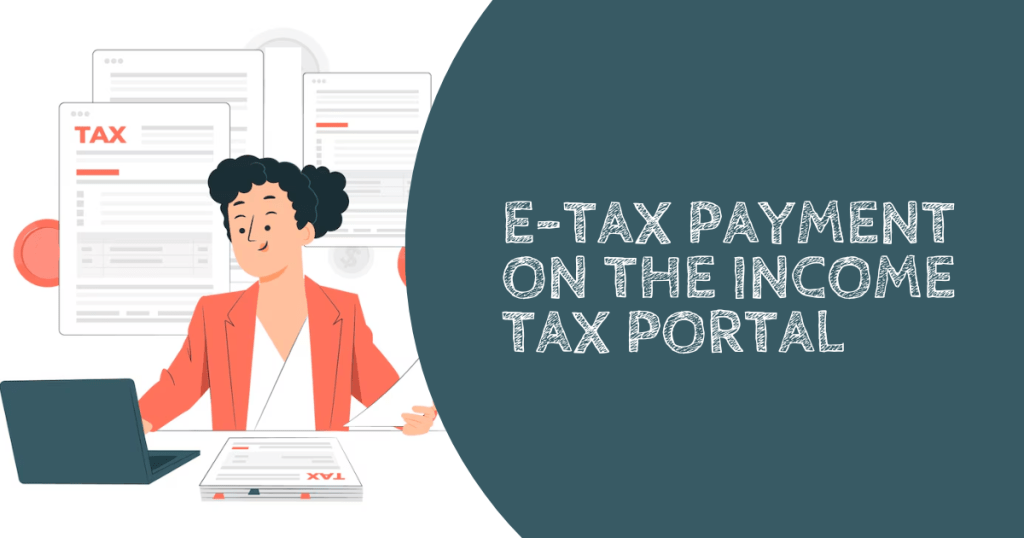The Finance Act 2023 amended Section 115BAC, making the new tax regime the default option from AY 2024-25 (FY 2023-24 onwards) for:
- Individuals
- HUFs (Hindu Undivided Families)
- AOPs (Association of Persons, excluding co-operative societies)
- BOIs (Body of Individuals)
- Artificial Juridical Persons
However, eligible taxpayers can choose to opt out of the new tax regime and continue under the old one.
About Old vs New Tax Regime
The old tax regime refers to the previous income tax system, which follows the earlier tax slabs and allows for various deductions and exemptions (under Section 80C, 80D, HRA, etc.).
In contrast, the new tax regime offers lower tax rates but restricts most deductions, making it simpler but potentially less beneficial for those with significant tax-saving investments.
For non-business taxpayers (such as salaried individuals and non-business professionals), the choice between the old and new tax regimes can be made every year while filing their Income Tax Return (ITR).
The new tax regime is now the default option for all taxpayers under the amended Section 115BAC. However, individuals and businesses still retain the choice to opt for the old tax regime if it proves more beneficial for them.
Let’s analyse and compare the old and new tax regimes under different scenarios.
Slab Rates For FY 2024-25
Under the Old Tax Regime
| Income Range (₹) | Tax Rate | Tax Calculation |
| Up to ₹2,50,000 | 0% | Nil |
| ₹2,50,001 – ₹5,00,000 | 5% | 5% of income above ₹2.5L |
| ₹5,00,001 – ₹10,00,000 | 20% | ₹12,500 + 20% of income above ₹5L |
| Above ₹10,00,000 | 30% | ₹1,12,500 + 30% of income above ₹10L |
Under New Tax Regime
| Income Range (₹) | Tax Rate | Tax Calculation |
| Up to ₹3,00,000 | 0% | Nil |
| ₹3,00,001 – ₹7,00,000 | 5% | 5% of income above ₹3L |
| ₹7,00,001 – ₹10,00,000 | 10% | ₹20,000 + 10% of income above ₹7L |
| ₹10,00,001 – ₹12,00,000 | 15% | ₹50,000 + 15% of income above ₹10L |
| ₹12,00,001 – ₹15,00,000 | 20% | ₹80,000 + 20% above ₹above ₹12L |
| Above ₹15,00,001 | 30% | ₹1,40,000 + 30% above ₹15L |
Deductions/Exemptions – Differences
| Deduction/Exemption | Old Regime | New Regime |
| Standard Deduction | ₹50,000 | ₹50,000 (from Budget 2023) |
| House Rent Allowance | ✅Available | ❌Not Allowed |
| Leave Travel Allowance | ✅Available | ❌Not Allowed |
| Section 80C (PPF, ELSS etc.) | ✅Up to ₹1.5L | ❌Not Allowed |
| Section 80D (Health Insurance) | ✅Up to ₹75K | ❌Not Allowed |
| Home Loan Interest (Sec 24) | ✅Up to ₹2L | ❌Not Allowed |
| NPS Additional (80CCD(1B)) | ✅Extra ₹50K | ❌Not Allowed |
| Education Loan Interest (80E) | ✅Full interest | ❌Not Allowed |
| Donations (80G, 80GGA, etc.) | ✅Available | ❌Not Allowed |
| Savings Account Interest (80TTA) | ✅₹10K | ❌Not Allowed |
| Rent Paid (80GG) | ✅Up to ₹60K | ❌Not Allowed |
| Disabled Dependent (80DD) | ✅Up to ₹1.25L | ❌Not Allowed |
| Medical Treatment (80DDB) | ✅Up to ₹1L | ❌Not Allowed |
| Electric Vehicle Loan (80EEB) | ✅₹1.5L | ❌Not Allowed |
Deductions/Exemptions – Similarities
| Deduction/Exemption | Old Regime | New Regime |
| Leave Encashment (on retirement) | ✅Up to ₹25L | ✅Up to ₹25L |
| Gratuity | ✅Up to ₹20L (govt employees: fully exempt) | ✅Same as Old Regime |
| Voluntary Retirement Compensation | ✅Up to ₹5L exempt | ✅Same as Old Regime |
| Agricultural Income | ✅Fully Exempt | ✅Fully Exempt |
| Dividend Income (from Indian cos.) | ✅Taxable but no TDS | ✅Same as Old Regime |
| Capital Gains (LTCG on equity) | ✅₹1L exemption (Sec 112A) | ✅Same as Old Regime |
| Interest on Tax-Free Bonds | ✅Exempt | ✅Exempt |
| PPF Interest | ✅Fully Exempt | ✅Fully Exempt |
| Life Insurance Maturity Proceeds | ✅Exempt (if premium ≤10% of sum assured) | ✅Same as Old Regime |
Surcharge
| Income Range | Old Regime Surcharge | New Regime Surcharge |
| Up to ₹50 lakh | Nil | Nil |
| ₹50 lakh – ₹1 crore | 10% | 10% |
| ₹1 crore – ₹2 crore | 15% | 15% |
| ₹2 crore – ₹5 crore | 25% | 25% |
| Above ₹5 crore | 37% | 25% (capped) |
Rebate u/s 87A
| Feature | Old Tax Regime | New Tax Regime |
| Applicable Income Limit | Up to ₹5 lakh | Up to ₹7 lakh |
| Maximum Rebate Amount | ₹12,500 | ₹25,000 |
| Effective Tax-Free Income | ₹5 lakh | ₹7 lakh |
| Conditions | Must opt for Old Regime | Default regime |
Marginal Relief
| Feature | Old Tax Regime | New Tax Regime |
| Applicability | When income crosses surcharge thresholds (₹50L/₹1Cr/₹2Cr/₹5Cr) | When income crosses surcharge thresholds (₹50L/₹1Cr/₹2Cr/₹5Cr) |
| Surcharge Slabs | 10% (₹50L-1Cr) 15% (₹1Cr-2Cr) 25% (₹2Cr-5Cr) 37% (>₹5Cr) | 10% (₹50L-1Cr) 15% (₹1Cr-2Cr) 25% (₹2Cr-5Cr) Capped at 25% (>₹5Cr) |
Opting Out of New Tax Regime for Business/Profession Income for taxpayers with income from business or profession, switching from the new tax regime back to the old tax regime requires submitting Form 10-IEA.
Form 10-IEA Submission Deadline:
- Must be filed on or before the due date under Section 139(1) (usually July 31 for most taxpayers, or October 31 if audit applies).
- The form must be submitted along with the ITR filing.
Opting Out is Yearly (Not Automatic):
- If a business/professional wants to leave the new regime, they must actively file Form 10-IEA.
- Once filed, they will be taxed under the old regime for that financial year.
Reversion to Old Regime is Irrevocable for the Year:
- Once Form 10-IEA is submitted, the taxpayer cannot switch back to the new regime for that same financial year.
- The choice must be re-evaluated each year (if eligible).
When choosing between the old and new tax regimes, it’s crucial to consider the exemptions and deductions available under the old regime to determine the net taxable income, then compare the tax liability under both systems to opt for the one with lower outgo. Informing your employer about your preferred regime ensures correct TDS deductions from your salary.
Additionally, suppose you have losses from house property, capital gains, or business/profession. In that case, these must be factored in, as opting for the new regime may render certain past and current losses ineligible for carry-forward, potentially impacting future tax calculations. A thorough evaluation of these factors will help make an informed decision.
FAQs
The new regime provides for concessional tax rates and liberal slabs. However, no deductions are allowed in the new regime (other than those specified e.g. 80JJAA, 80M, standard deduction).
The tax slabs and rates are different in old and new tax regimes. Various deductions and exemptions are allowed in the Old tax regime. The new regime offers lower rates of taxes but permits limited deductions and exemptions.
The option to choose between two regimes may vary from person to person. It is advisable to do a comparative evaluation and analysis under both regimes and then choose as per requirement. Taxpayers can broadly estimate and compare tax liability under the new and the old tax regime using the Income and Tax Calculator on the Income Tax Portal.
Form 10-IEA applies to AOP’s (other than Co-operative society) or BOI or AJP, who are filing return of Income in ITR-5. Form 10-IFA applies to new manufacturing co-operative Societies resident in India filing ITR 5, if they wish to avail New Tax Regime under Section 115BAE.


